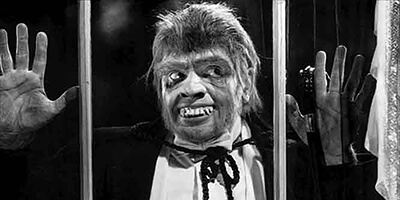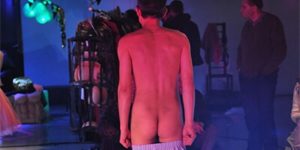Hyde's choice
This post is a preamble to the article that will follow it tomorrow. I wanted to write this preamble so that the article in question would have a better chance of being understood for what it is and the thought it contains would be less likely to be relegated to the side of Manicheism without further consideration.
It is not my intention to put the whole world on trial, as my readers will later realize, and to conclude its simplistic division between the good guys, of which I would claim to be one, and the stupid bad guys that one would have to face throughout one's life, so that the self-sufficiency of the enormous Norme and its practices erected as a supreme power would finally be shaken. Of course not; simply because it is not difficult to realize that there is still enough room for those who wish to do so, to resist the pressures of the powerful, whether one is still a young child or an aging individual. We have the opportunity of a certain choice that can give another meaning to our lives. This margin of freedom is called art. And as Godard said, "the margin is what holds the page together". That's how powerful it is. But beware, by art, an overused word if ever there was one, I mean the "real". Ah, problem: what is it? Well, to blunt this thorny question, I won't bother with fluctuating philosophical concepts.
No, true art is not so much debatable.
Of course, one can love this author or that work and denigrate others. The question is not that of taste, nor even of having to solve the apparent puzzle of differentiating a presumed authentic art from another more fallacious one. Under the term "art", we must put, in my opinion, everything that is of no pragmatic use to man. Whether it is judged good or bad, does not change anything. And by "the true", I mean, not to give it a qualitative meaning, but the tangible reality of this human particularity which consists in giving body to its imaginary. True" art is an art that serves no other purpose than itself. Implying by this assertion, that there would exist, at the opposite, a "false" art, I will develop this hypothesis by arguing simply that the "false" art is the one whose practice subjects it to other necessities that make its realization, by that very fact, unfulfilled. The "false" art, would thus be rather an art "to half". I am not denying that this art can produce masterpieces. There are tons of them accumulated in all the factories of the world and our country is renowned, among other things, for the marvellous skill of its creations, whether they be in the form of clothing, porcelain, clocks and other trinkets requiring infinite science. All this indeed contains a great deal of art, which even makes them, according to the expression works of art and the hands of genius craftsmen are surely themselves masterpieces of nature. I am truly far from any ridiculous idea of denigrating the beauty or emotional power of the great works of art that are produced in all fields. What I mean is that "true" art in my eyes is not an object, even if it is a canvas. To clarify my thinking, I would say that art is content Sometimes it is in the object, but it may also never have been there as long as the object in question was at other times, for example, considered as an ordinary object, however decorative it may have been. And then suddenly, at the turn of an era, art can appear to the eyes of contemporaries through this same object, differently considered until then. I don't think that Duchamp, through his ready-madeI am well aware that all my development can be seen as a sum of obvious achievements on which an immensely open door is given.
I insist only to further emphasize that art is therefore not bound to a material embodiment. It is a presence. And this presence can disappear as much as it comes.
Art only exists when we see it exists. The object, which is in a way its repository, is not enough to retain it within itself if, following an evolution of views and morals, we no longer see it inhabiting its material. The human temperament is versatile by nature. This is one of its most complex aspects to really grasp. It is easy to believe that this is true, but very often it is not. I take as proof a few common examples taken from among hundreds of others: the stamp, the car and soon the telephone that have become collector's items, the mask in certain civilizations or any other ritual object that was probably never conceived in any other sense.
I do not pretend to substitute here my culture, of the most minimal, for a course on the question and refers you, for example, to the well conceived pages of the site www.philolog.fr if you wanted a more in-depth presentation.
For I have only touched on the matter to come to this single notion of "presence". We find ourselves in the presence of art in a work, if and only if it is present. Having read what precedes, you will forgive, I hope, this truism and will understand that it tends only to insist on the ephemeral nature of the glance. The only true art is that which we feel, pleasantly or not, as a manifestation entering the world of art. colliding with our eyes, our hearing, our senses whatever they are or our understanding.
In this case, we are not only appreciating the beauty of an object, we are experiencing its strength.
The presence of art implies the struggle with our resistances. It is not necessarily the struggle that I am describing, but the pressure that is exerted on our sensitive sensors. As a result of this pressure, there is, momentarily or irreversibly, a deformation of our being. I therefore come to say that true art is that which has the power to exert a deformation of our perception. It would be reductive, among all the possible deformations, to retain only "the disorder". The shock, the blow, the aspiration, the displacement, the reorganization, the remodeling, the drifting, the rejection, the swelling, the scratching... so many sensitive manifestations of the dynamics of art in action. It therefore seems possible to compare his phenomenon to that attributed to striking spirits or, more ordinarily, to waves. Vibrations, circles in the water, earthquakes... here is a panel of effects to which the sensation of art can subject us. True art, from my point of view, aims at the purification of these undulations and lines of force. Everything that surrounds it or gave rise to it can disappear in favour of the trace they leave in us. It is in this sense that the work itself can disappear and even never have existed. If we have been able to imagine the passage of its essence, that is enough for it to exist forever. Thus we perceive all the art of works that we have never seen and will never see. It is enough for us to know this presence of art by hearsay.
Art is independent of the work that bears it.
I had the strange but effective experience of seeing Guernica with my own eyes at the Prado. I couldn't have stayed more than a few minutes in front of the immense painting. Not that I wasn't interested, but the idea I had of it was totally pre-existing the work itself and the original version couldn't change anything. My eyes were powerless to give me any other image than the one my brain was already entertaining. The real canvas was in my head. Whether this is a personal characteristic or a universal truth, I don't know, but this is probably why the ephemeral art of the stage is enough to constitute for me a Louvre of my own measure, whose reserves are bursting at the seams with thousands of creations forged every second since my consciousness was shaped by it.
It is in this sense that I believe I am already giving a glimpse of theatre to those who want to see it by simply visiting this site.
The one you imagine seeing and hearing is undoubtedly the exact representation of what does not yet exist. The stage will only lengthen its duration and continue to grow. Thus I am my theatre as each one is his life. There is no other art than being. That is why the long digression of this preamble leads and prepares for the article of which it is an appendix. It will be about how I believe it is possible to build oneself in spite of the wills that others would like to instill in us as roads to follow. I am not talking about the now famous "resilience" dear to Boris Cyrulnik, but about building on a land preserved from all defilement. It will also be a question of how much resistance is an art and how the cartography of a life should not follow the paths of organized travel. Finally, it will be about the notion of "growing up", not seen as an irredeemable growth towards adult mediocrity, but as the extension of one's most original self, finally erected into a mature individual. It will be necessary in advance to forgive the rage that will undoubtedly inhabit these words to come. It will not be there for its own sake, but because it is sometimes necessary to go and fetch Mr. Hyde for a while, so that he can come to the aid of the frightened Dr. Jekyll. The unfortunate man has indeed, in my opinion, in case of threat of war, no other recourse than to solicit as an ally his darkest part, to give a tiny chance to his real goodness of being, to possibly see the light of day. As far as possible, it is better, as the common sense says, to prevent than to cure; it is better to resist by a guerrilla war skilfully conducted, than to fight the invader better equipped with heavy weapons, in the open, under the abusive and perverse pretext of a regular fight.
to be continued...










